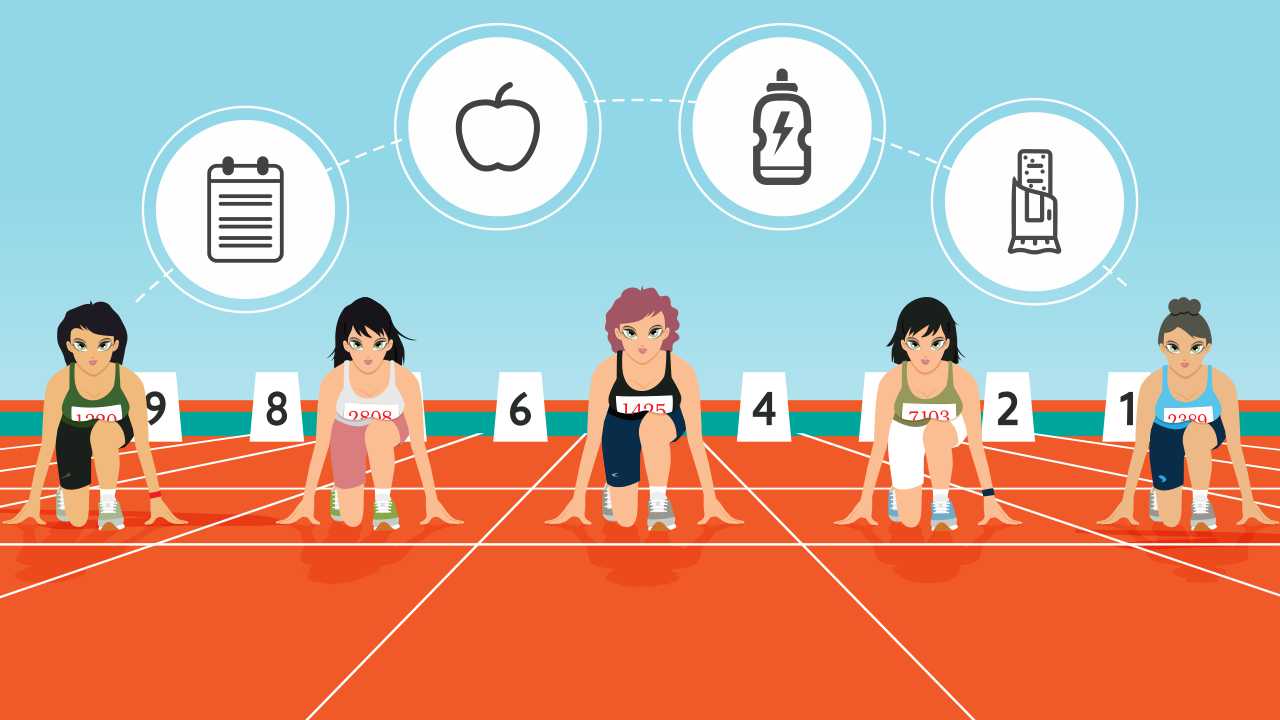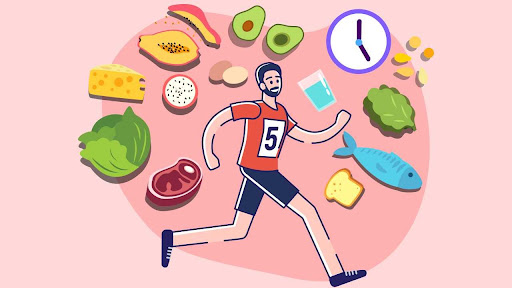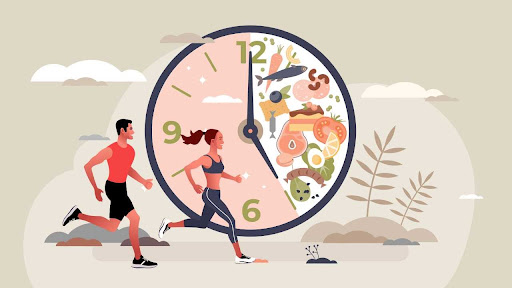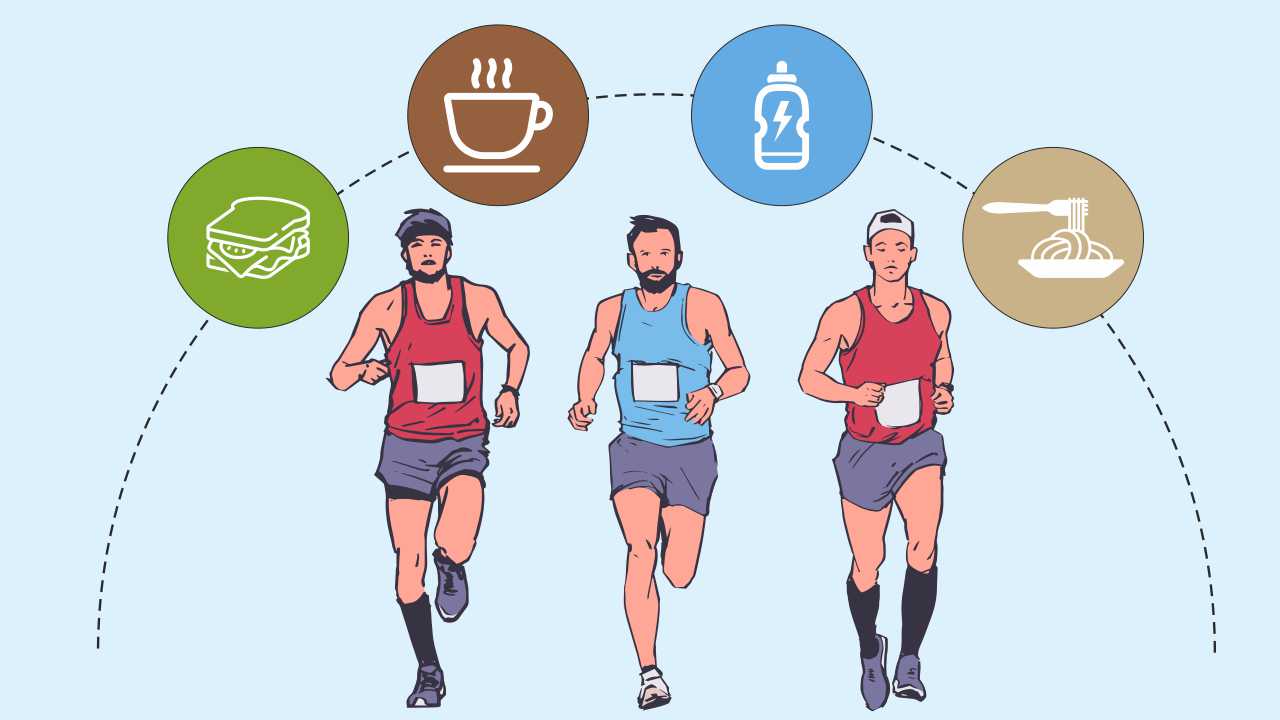
Nutrition Strategies to Prevent Bonking During a Marathon

Bonking mid-race after months of training and preparation is every runner’s worst nightmare. Bonking refers to hitting a wall of fatigue that is extremely difficult to overcome. Some runners mistakenly believe that bonking indicates a lack of sufficient physical fitness or that they did not train hard enough for the event. The truth is, bonking occurs as a result of an inadequate nutritional plan that leaves the mind and body starving for vital nutrients and fuel during an event.
So, what is the science behind bonking?
Physiologically, the onset of extreme fatigue reflects glycogen depletion in the working muscles. During prolonged exercise lasting two hours or longer, muscle activity is dependent on the ability to generate fuel in the form of adenosine triphosphate (ATP), which requires the presence of glucose in the blood and glycogen in the muscles. The presence of these two fuel sources is often the limiting factor in a runner’s performance. Interestingly, at rest, muscle cells contain about 1 billion ATP molecules, all of which are used and replaced approximately every two minutes during intense exercise. Therefore, ATP production increases 1,000-fold during intense activity to meet the demands of muscle activity.
The goal of your nutrition strategies should be to maximize the amount of glycogen storage in the muscles, so that you are well-positioned to maintain your energy levels and perform at your best throughout the event. Interestingly, the primary fuel source for your brain is glucose, so bonking can also include fatigue of the central nervous system.
What does bonking feel like when running?
The symptoms of bonking vary, but typically include feeling heavy legs, dizziness, brain fog, slurred speech, and exhaustion in its most extreme form, to the point where the body stops working and you are forced to give up.
Nutritional strategies for runners and other endurance athletes
What to eat to avoid bonking is always a hot topic of conversation among endurance athletes. And following a few dietary tips before, during, and after the race can be useful. All runners should consider the following nutrition tips to avoid the bonk:
1. Think long term
Many runners think that a short-term carbohydrate-loading plan or a dinner comprising rice and lentil or pasta before race day is sufficient to fuel their runs. This is a misconception. Preventing bonking requires long-term planning, which begins with eating sufficient amounts of carbohydrates daily even when not training. Carbohydrate needs vary, but typically fall within the range of 40% to 65% of your total caloric intake. This percentage increases as race day approaches, but for regular maintenance of glycogen stores, this is a good rule of thumb.
2. Eat the right kinds of carbs before exercise
If you are exercising for more than 60 to 90 minutes, whether as part of your training or during an event, it is vital to consume carbohydrates that have a moderate-to-low glycemic index, as these foods provide sustained energy for your workout duration. A few suitable options include oatmeal, low-fat yogurt, and apples. Ensure to consume low-fat and low-fiber carbohydrate-rich snacks to ensure proper digestion.
Also read: Fat vs Carbs: Which Is a Better Energy Source for Running?
3. Continue to fuel the body during exercise
Whether you are training or competing in an event, it is essential that you continue to consume the nutrients needed to provide fuel to the body. Glycogen stores last only about 90 to 120 minutes, depending on exercise intensity. Meanwhile, the human body can absorb about 1g to 1.5g of carbohydrate per minute or 240 to 360 calories of carbs per hour. So, you need to continually refuel the body instead of trying to respond when your energy levels start to fade. In other words, staying ahead of the body’s energy needs is necessary. Eating 240 to 360 calories of carbs, which is 60g-90g per hour, will allow you to maintain your energy levels and optimize your performance. Most runners opt for sports gels and drinks during a race. Apart from these, you may consider options such as bananas, bread with jam, and protein bars.
4. Replenish glycogen stores after long workouts
It can take about a day to fully replenish your muscle glycogen stores, wherein there is a replenishment of 5%-7% per hour. So, having a plan to replenish those stores is important. Try to consume carbohydrate-rich foods and beverages within 15 to 30 minutes of completing a long run and aim for a 3:1 or 4:1 ratio of carbohydrate-to-protein in your post-run meal or snack. Then, eat a healthy carbohydrate-rich meal again one to two hours later to further enhance recovery.
5. Practice your nutrition strategy
This may be the single most important tactic to avoid bonking during a race. The trial-and-error period of figuring out when you usually fatigue during an event and how to best fuel your body to prevent bonking, should be integrated into your training program. Do not experiment with it during the days leading up to an event. Avoid experimenting with a new food item or your nutrition plan at the last minute.
6. Focus on optimal hydration
Proper hydration plays a pivotal role in maximizing your performance. In addition to being a contributor to bonking, dehydration can lead to cramping, headache, heat exhaustion, and/or heat stroke. For most long-distance runners, water is not enough, as the body needs an appropriate intake of fluids, electrolytes, and carbohydrates to promote hydration and restore muscle glycogen and electrolytes depleted during exercise.
Also read: How to Plan Hydration as a Runner on a Hot and Humid Day
Remember that nutrition is as important as exercise programming when it comes to creating a well-constructed training plan. So, you need to fuel the body to not only train for months but also to bring about your best performance on race day. Stated simply, bonking is preventable through proper nutrition.
References
1. Coyle EF. Substrate utilization during exercise in active people. Am J Clin Nutr 1995, 61: 968S–79S.
2. Fitts RH. Cellular mechanisms of fatigue. Physiol Rev 1994, 74: 49–94.
3. Porcari J, Bryant C, Comana F. Exercise Physiology. Philadelphia: FA Davis, 2015.
4. United States Department of Agriculture. 2020-2025 Dietary Guidelines for Americans 9th ed 2020.














